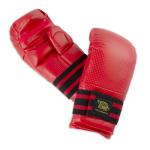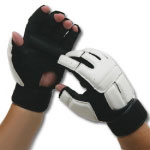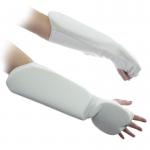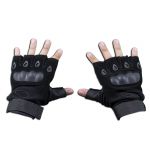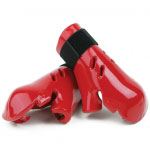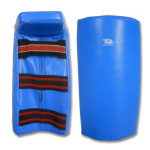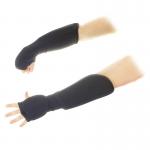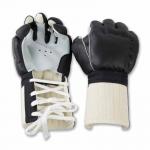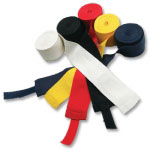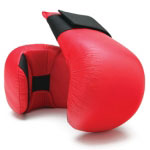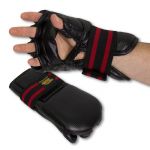Taekwondo, Karate & Sparring Hand Guards
-
$26.95
-
$26.95
-
$17.95
-
$19.95
-
$34.95
-
$39.95
-
$99.95
-
$9.95
-
$29.95
-
$16.95
Let's talk types. For traditionalists, you'll find foam chops and vinyl hand guards, the kind that cover the top of the hand with just enough padding to absorb impact without getting in the way of speed or grip. These are the go-to for many Karate tournaments, especially the tournament chops that cover the entire back of the hand and fingers. If you've ever seen point fighters at a karate competition, chances are they're wearing something like these. They're lightweight, open-palm, and fast.
For Taekwondo practitioners, you'll notice some WTF-style gloves on this page. These are usually fingerless and made with dense padding over the knuckles, designed to absorb impact while keeping your fingers free for grabs and clinch work. Taekwondo hand guards need to allow for quick punches, but they also have to meet competition standards, so these gloves tend to be sleek and specific. If you're searching for taekwondo handguards that you can take to your next tournament without getting flagged by a ref, these are what you're after.
Now, if you're into Jeet Kune Do or other hybrid arts, the Kempo and JKD gloves we carry are worth checking out. These originated from styles that combined traditional martial arts with boxing and street fighting techniques, so they're built tough. You'll get more wrist support and better knuckle protection, with a design that blend striking and grappling capabilities. These gloves trace back to Bruce Lee's personal training style. JKD emphasized practicality and speed, and the gear reflects that. Whether you're practicing trapping hands or throwing punches with a palm strike, these gloves are designed to keep up.
We also carry cloth hand guards, which are ideal for light contact sparring or padding up under heavier gloves. They're easy to wash, slip on like a sock, and give you that extra bit of cushioning without bulking up your hands. They're especially popular for younger students, or for schools that focus on more traditional or low-impact sparring styles. They're not going to protect you in a full-contact match, but for day-to-day class use, they're reliable and affordable.
If you've got more of a boxing or MMA background, hand wraps might be more your speed. While they're not technically hand guards, they're essential for wrist support and knuckle safety. Wrapping up before a bag workout or mitt session is just smart training. And if you're layering them under gloves, they help absorb sweat and reduce friction.
Looking for something a little more unique? Check out the steel fist gloves, sometimes called sap gloves. These aren't your average sparring gloves. They're lined with weighted material over the knuckles, giving you more power and a serious edge for self-defense training. They're not made for tournament use, but for reality-based martial arts or tactical training, they bring a different kind of utility. Think of them like a cross between a glove and a discreet weapon. They're not for everyone, but for those who know how and when to use them, they're a valuable tool.
Another popular option is the competition karate punch glove. These are typically approved for point fighting or semi-contact events, with secure closures and plenty of padding across the knuckles. They're made for speed, clean technique, and control, helping you train at full intensity without risking busted knuckles or jammed fingers. If you're prepping for a tournament and need karate hand guards that meet competitive standards, these are a smart pick.
Martial arts hand guards have come a long way since the early days of sparring. Back in the 60s and 70s, sparring was often done bare-knuckle or with minimal protection. Just ask any old-school black belt who trained in a garage dojo. But as schools grew and styles spread, there was a push to keep students safer while still allowing realistic practice. That's where the foam chops came in. They were some of the first commercially produced hand guards for martial arts, and they set the stage for everything that came after. Today's gear is lighter, more durable, and far more specialized.
So if you're hunting for sparring hand guards that can take a hit, protect your fists, and meet the needs of your martial arts style, we've got you covered.
Are These Hand Guards Approved for Taekwondo Competitions?
Some of the hand guards on this page are approved for use in official Taekwondo competitions, but not all. If you're competing in a World Taekwondo (WT) or Olympic-style tournament, you'll need gloves that meet specific regulations. Most WT competitions require fingerless, open-palm designs with padded knuckles and a secure wrist strap. These are often labeled as "WTF-style" or "WT-approved" gloves and are usually white with minimal branding.
Before purchasing, check your tournament's rules to confirm glove requirements. We carry multiple styles of taekwondo hand guards that match competition standards, so just look for the ones clearly marked for WT use. If you're unsure, feel free to contact us and we'll point you to the right pair.
What's the Difference Between Foam Chops and Vinyl Hand Guards?
Foam chops and vinyl hand guards are both designed for striking protection, but they serve slightly different purposes and offer different benefits. Foam chops are typically made of lightweight dipped foam with an open-palm design. They're popular for point sparring in Karate and Taekwondo because they're quick to slip on, offer decent knuckle protection, and don't restrict movement. These are the classic "tournament style" gloves you'll see at many local and regional events.
Vinyl hand guards, on the other hand, are more durable and feature a synthetic leather shell over layered padding. They usually come in two forms: fingerless designs (sometimes called cobra chops) and full-hand versions that cover the fingers and back of the hand. Vinyl guards tend to offer more wrist support and better impact absorption, making them a solid choice for higher-intensity sparring or daily training.
If you want something fast and flexible, foam chops are the go-to. If you need something with more structure and durability, vinyl gloves are worth the upgrade.
Can I Use Cloth Hand Guards for Sparring?
Cloth hand guards can be used for light-contact sparring, but they're not designed to handle full-force strikes. These guards are typically made with elastic fabric and thin foam padding that slips over the hand like a glove or wrap. They're great for basic partner drills, controlled sparring, or for adding a little extra protection under bulkier gloves.
That said, if you're participating in moderate to heavy sparring, especially in Karate, Taekwondo, or other striking arts, you'll want something with more impact protection. Cloth guards won't absorb enough force to protect your knuckles, and they can wear down quickly under regular contact. They're best suited for beginners, kids, or low-intensity practice where safety and comfort are the main priorities.
What Are the Best Hand Guards for Kids?
For kids, the best hand guards are lightweight, easy to put on, and offer enough padding to protect growing hands without being bulky. Foam chops and cloth hand guards are both popular choices for youth martial arts because they're simple to use and provide a good balance of comfort and protection. Foam chops are especially common in Karate and Taekwondo classes, since they're approved for many point-style sparring events and offer decent knuckle coverage without restricting movement.
If your child is involved in more intense sparring or competition, you may want to step up to vinyl hand guards. These offer better wrist support and thicker padding while still being relatively light. Just make sure to check with the instructor or school first, since some dojos have specific gear requirements for kids' classes.
Can I Wear Hand Wraps Under My Hand Guards?
Yes, you can wear hand wraps underneath your hand guards, and in many cases, it's a smart idea. Hand wraps provide added wrist support, protect the small bones in your hands, and help reduce friction inside your gloves during training. This is especially helpful if you're sparring regularly or hitting pads and bags as part of your martial arts routine.
Just make sure your gloves still fit snugly over the wraps. Some hand guards, like foam chops or cloth styles, may feel tight when combined with wraps, while vinyl or Kempo-style gloves often have more room and adjustable straps to accommodate the extra layer. If your gloves feel too cramped, consider switching to a slightly larger size or choosing guards with a more flexible design.
Are These Gloves Washable? How Should I Clean Them?
Most hand guards are not machine washable, but that doesn't mean you can't keep them clean. Cloth hand guards are the exception, and can usually be tossed in the washing machine on a gentle cycle, then air-dried. Just avoid hot water or a dryer, since heat can cause the elastic to lose its stretch.
Foam chops, vinyl gloves, and other padded sparring hand guards should be wiped down by hand. Use a damp cloth with mild soap or disinfectant spray to clean the surface, then let them air out completely before storing. This helps prevent odor buildup and extends the life of the padding and stitching. After a sweaty class, it's a good habit to let your gloves dry in a well-ventilated area instead of stuffing them straight into your gear bag.
RECENTLY VIEWED








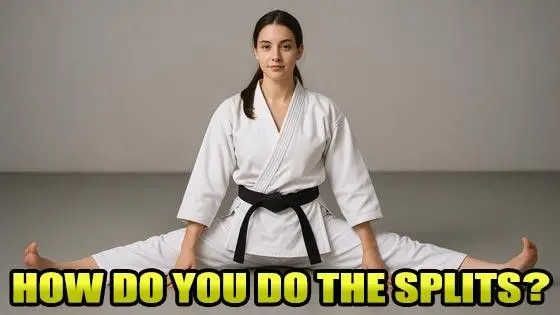


 (1)
(1)